Sarah Sundin's Blog, page 423
July 8, 2013
Today in World War II History
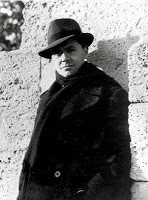 Jean Moulin70 Years Ago—July 8, 1943: Nazis execute French resistance leader Jean Moulin. Gen. Dwight Eisenhower arrives at Malta, Headquarters for Operation Husky, the upcoming invasion of Sicily.
Jean Moulin70 Years Ago—July 8, 1943: Nazis execute French resistance leader Jean Moulin. Gen. Dwight Eisenhower arrives at Malta, Headquarters for Operation Husky, the upcoming invasion of Sicily.
Published on July 08, 2013 01:00
July 7, 2013
Today in World War II History
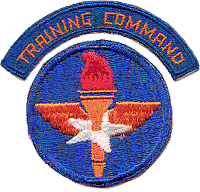 70 Years Ago—July 7, 1943: US Army Air Force Training Command formed, combining Flying and Technical Training Commands, under Maj. Gen. Barton Yount at Fort Worth, Texas.
70 Years Ago—July 7, 1943: US Army Air Force Training Command formed, combining Flying and Technical Training Commands, under Maj. Gen. Barton Yount at Fort Worth, Texas.
Published on July 07, 2013 01:00
July 6, 2013
Today in World War II History
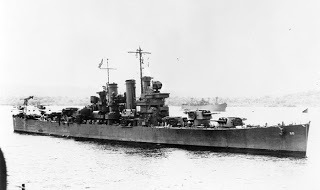 USS Helena in the South Pacific, 194370 Years Ago—July 6, 1943: Battle of Kula Gulf: in Solomons, US ships slow Japanese reinforcement of New Georgia; cruiser USS Helena and Japanese destroyers Niizuki and Nagatsuki are sunk.
USS Helena in the South Pacific, 194370 Years Ago—July 6, 1943: Battle of Kula Gulf: in Solomons, US ships slow Japanese reinforcement of New Georgia; cruiser USS Helena and Japanese destroyers Niizuki and Nagatsuki are sunk.
Published on July 06, 2013 01:00
July 5, 2013
Today in World War II History
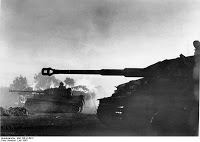 German Panzer VI/Tiger I tanks passing burning buildings
German Panzer VI/Tiger I tanks passing burning buildings during the Battle of Kursk in Orel, Russia70 Years Ago—July 5, 1943: Battle of Kursk begins: last major German offensive on eastern front.
Published on July 05, 2013 01:00
July 4, 2013
Book Beat - Small Town Girl by Ann Gabhart
 What could be more painful than watching the man you love marry your sister? In the fall of 1941, Kate Merritt puts on a properly celebratory smile as her sister Evie marries pastor Mike Champion, the object of Kate's affections. Meanwhile, the best man, out-of-towner Jay Tanner is intrigued by Kate. Too handsome and charming for his own good, Jay is used to gaining women's hearts easily, but with a history of loss and abandonment, he is not used to the warm family welcome the Merritts extend to him. However, Mike warns Kate and her family about Jay's unreliable nature, and war looms on the horizon.
What could be more painful than watching the man you love marry your sister? In the fall of 1941, Kate Merritt puts on a properly celebratory smile as her sister Evie marries pastor Mike Champion, the object of Kate's affections. Meanwhile, the best man, out-of-towner Jay Tanner is intrigued by Kate. Too handsome and charming for his own good, Jay is used to gaining women's hearts easily, but with a history of loss and abandonment, he is not used to the warm family welcome the Merritts extend to him. However, Mike warns Kate and her family about Jay's unreliable nature, and war looms on the horizon. In Small Town Girl , Ann Gabhart returns to the warmth of the Merritt home and the charming but quirky town of Rosey Corner, Kentucky, introduced in her wonderful novel, Angel Sister . Once again, Gabhart crafts characters real and flawed and lovable, and a family you want to adopt as your own. The story is compelling, the writing flows, and the historical details are just right. I strongly recommend this novel.
Published on July 04, 2013 02:00
Today in World War II History
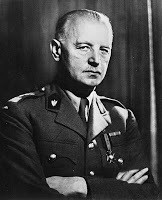 70 Years Ago—July 4, 1943: Gen. Wladyslaw Sikorski, leader of Polish government-in-exile and commander of Polish forces, dies in a plane crash at Gibraltar.
70 Years Ago—July 4, 1943: Gen. Wladyslaw Sikorski, leader of Polish government-in-exile and commander of Polish forces, dies in a plane crash at Gibraltar.
Published on July 04, 2013 01:00
July 3, 2013
Today in World War II History
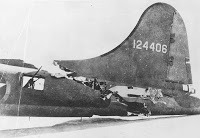 The All-American a B-17F almost severed in half
The All-American a B-17F almost severed in half by a collision over Tunisia. The pilot compensated
for the lost and damaged controls and brought
the plane home. Miraculously, even the tail gunner
survived.70 Years Ago—July 3, 1943: New song in Top Ten: “Comin’ in on a Wing and a Prayer,” based on stories of bomber pilots.
Published on July 03, 2013 01:00
July 2, 2013
Today in World War II History
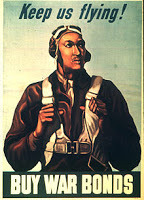 70 Years Ago—July 2, 1943: Allied bombing of Sicilian airfields begins to drive German fighter planes to Italy. First Tuskegee Airman (African-American fighter pilots) shoots down an enemy plane—Lt. Charles Hall in a P-40.
70 Years Ago—July 2, 1943: Allied bombing of Sicilian airfields begins to drive German fighter planes to Italy. First Tuskegee Airman (African-American fighter pilots) shoots down an enemy plane—Lt. Charles Hall in a P-40.
Published on July 02, 2013 01:00
July 1, 2013
Pharmacy in World War II - The Pharmacist
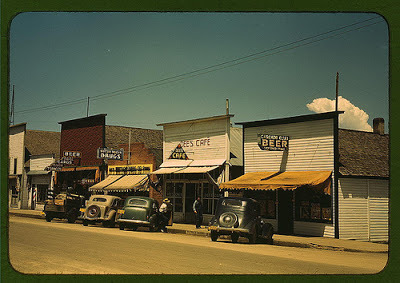 Street scene, including drug store, Cascade, Idaho 1940sIn my novel On Distant Shores, which officially releases August 1, 2013, the hero, Tech. Sgt. John "Hutch" Hutchinson, serves as an Army pharmacist in World War II.
Street scene, including drug store, Cascade, Idaho 1940sIn my novel On Distant Shores, which officially releases August 1, 2013, the hero, Tech. Sgt. John "Hutch" Hutchinson, serves as an Army pharmacist in World War II. As a pharmacist, I found much about my profession has changed, but some things have not—the personal concern for patients, the difficult balance between health care and business, and the struggle to gain respect in the physician-dominated health care world. Today I’ll discuss the role of the pharmacist in the 1940s, on July 8, we'll visit the local drug store and see how its role changed during the war, and on July 15, I’ll review the role of pharmacy and pharmacists in the US military.
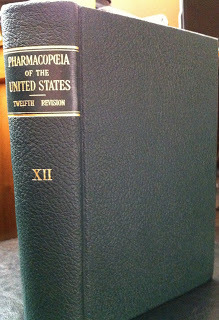 The Profession of Pharmacy in the 1940sAlthough the term of druggist has been abandoned by the profession, in the 1940s the terms of pharmacist and druggist were interchangeable. The 1940 US census counted over 80,000 pharmacists. The majority worked in retail pharmacy, with only 3000 working in hospitals. In fact, less than half of hospitals had a pharmacist on staff.A cornerstone of pharmacy had always been compounding, the practice of mixing a prescription from raw ingredients. Pharmacists made creams, ointments, elixirs, suspensions, capsules, tablets, suppositories, and powder papers. Every pharmacist owned a copy of the USP (United States Pharmacopoeia) guide—the 11th Edition (1937) or 12th Edition (1942), which provided chemical data on each substance. By the 1940s, pharmacists did less compounding—about 70 percent of prescriptions were filled with manufactured dosage forms.In the 1940s, the pharmacist was a vital member of the community. Often viewed as more accessible than physicians, pharmacists were relied upon for health information and the treatment of minor ailments.Education and LicensingThe first four-year Bachelor’s of Science degree in pharmacy was offered by Ohio State University in 1925. The four-year program became mandatory with the incoming class of 1932. In 1942, sixty-eight colleges of pharmacy operated in the United States. In addition to general education requirements, pharmacy students studied pharmacy, pharmaceutical chemistry, pharmacognosy (deriving pharmaceuticals from raw substances, such as plants), pharmacology (the effect of a drug on the body), and business. To increase the chance that a student would finish his degree before being drafted, most colleges of pharmacy adopted a year-round, three-year program during the war.Each state had its own licensing requirements and examinations, and there was no reciprocity between states. For example, a pharmacist licensed in California had to take a new set of examinations if he moved to Michigan.
The Profession of Pharmacy in the 1940sAlthough the term of druggist has been abandoned by the profession, in the 1940s the terms of pharmacist and druggist were interchangeable. The 1940 US census counted over 80,000 pharmacists. The majority worked in retail pharmacy, with only 3000 working in hospitals. In fact, less than half of hospitals had a pharmacist on staff.A cornerstone of pharmacy had always been compounding, the practice of mixing a prescription from raw ingredients. Pharmacists made creams, ointments, elixirs, suspensions, capsules, tablets, suppositories, and powder papers. Every pharmacist owned a copy of the USP (United States Pharmacopoeia) guide—the 11th Edition (1937) or 12th Edition (1942), which provided chemical data on each substance. By the 1940s, pharmacists did less compounding—about 70 percent of prescriptions were filled with manufactured dosage forms.In the 1940s, the pharmacist was a vital member of the community. Often viewed as more accessible than physicians, pharmacists were relied upon for health information and the treatment of minor ailments.Education and LicensingThe first four-year Bachelor’s of Science degree in pharmacy was offered by Ohio State University in 1925. The four-year program became mandatory with the incoming class of 1932. In 1942, sixty-eight colleges of pharmacy operated in the United States. In addition to general education requirements, pharmacy students studied pharmacy, pharmaceutical chemistry, pharmacognosy (deriving pharmaceuticals from raw substances, such as plants), pharmacology (the effect of a drug on the body), and business. To increase the chance that a student would finish his degree before being drafted, most colleges of pharmacy adopted a year-round, three-year program during the war.Each state had its own licensing requirements and examinations, and there was no reciprocity between states. For example, a pharmacist licensed in California had to take a new set of examinations if he moved to Michigan.
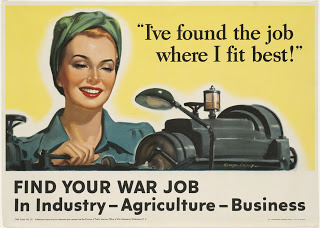 Manpower ShortageIn a nation of 130 million, over 11 million would serve in the armed forces during the course of the war. This produced a manpower shortage on the home front, and pharmacy was not immune. As a class, pharmacists were not exempt from the draft, but local draft boards could declare individuals as “necessary men” if their enlistment would negatively affect the health of the community. During World War II between 10,000-14,000 pharmacists served in the military. Due to this loss, approximately 15 percent of drug stores closed during the war. The west coast was hard hit when all Japanese-American pharmacists were forcibly interned.However, more opportunities opened for women as colleges and employers actively recruited them. While less than 5 percent of pharmacists in 1940 were female, the percentage of female pharmacy students rose above 15 percent during the war.
Manpower ShortageIn a nation of 130 million, over 11 million would serve in the armed forces during the course of the war. This produced a manpower shortage on the home front, and pharmacy was not immune. As a class, pharmacists were not exempt from the draft, but local draft boards could declare individuals as “necessary men” if their enlistment would negatively affect the health of the community. During World War II between 10,000-14,000 pharmacists served in the military. Due to this loss, approximately 15 percent of drug stores closed during the war. The west coast was hard hit when all Japanese-American pharmacists were forcibly interned.However, more opportunities opened for women as colleges and employers actively recruited them. While less than 5 percent of pharmacists in 1940 were female, the percentage of female pharmacy students rose above 15 percent during the war.
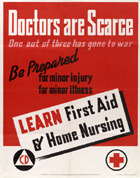 Effects of the WarDue to store closures, the average store filled 13 percent more prescriptions than before the war. This increase in workload was balanced by depletion of other goods due to rationing and shortages. In addition, citizens were encouraged to take better care of their health so they could contribute to the war effort, which led to an increase in physician visits. Overworked physicians dispensed fewer drugs from their offices and sent more patients to pharmacies. As a result, the average drug store enjoyed an 80 percent increase in sales during the war.Pharmacists dealt with shortages of ingredients and medications. A serious shortage of quinine, used to treat malaria, led the military to collect the majority of the nation’s quinine stock. Also, shortages of alcohol, sugar, and glycerin taxed the ability of pharmacists to compound. Each pharmacy received a ration of ten pounds of sugar a week for compounding purposes.ResourcesMy main source was this excellent, comprehensive, and well-researched book: Worthen, Dennis B. Pharmacy in World War II. New York: Pharmaceutical Products Press, 2004.http://www.lloydlibrary.org (Website of the Lloyd Library and Museum, which has many articles and resources on the history of pharmacy).United States Pharmacopoeial Convention. The Pharmacopoeia of the United States of America, Twelfth Edition. Easton PA: Mack Printing Company, 1 November 1942.
Effects of the WarDue to store closures, the average store filled 13 percent more prescriptions than before the war. This increase in workload was balanced by depletion of other goods due to rationing and shortages. In addition, citizens were encouraged to take better care of their health so they could contribute to the war effort, which led to an increase in physician visits. Overworked physicians dispensed fewer drugs from their offices and sent more patients to pharmacies. As a result, the average drug store enjoyed an 80 percent increase in sales during the war.Pharmacists dealt with shortages of ingredients and medications. A serious shortage of quinine, used to treat malaria, led the military to collect the majority of the nation’s quinine stock. Also, shortages of alcohol, sugar, and glycerin taxed the ability of pharmacists to compound. Each pharmacy received a ration of ten pounds of sugar a week for compounding purposes.ResourcesMy main source was this excellent, comprehensive, and well-researched book: Worthen, Dennis B. Pharmacy in World War II. New York: Pharmaceutical Products Press, 2004.http://www.lloydlibrary.org (Website of the Lloyd Library and Museum, which has many articles and resources on the history of pharmacy).United States Pharmacopoeial Convention. The Pharmacopoeia of the United States of America, Twelfth Edition. Easton PA: Mack Printing Company, 1 November 1942.
Published on July 01, 2013 02:00
Today in World War II History
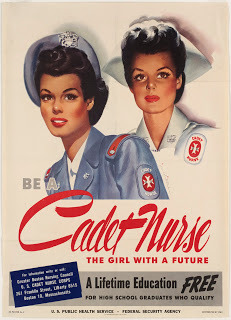 70 Years Ago—July 1, 1943: Congress changes WAAC (Women’s Army Auxiliary Corps) to WAC (Women’s Army Corps) effective 9/30/43. Congress creates US Cadet Nurse Corps, free nursing training in exchange for service. First All-American Girls Professional Baseball League All-Star Game; also first night game played at Wrigley Field, using temporary lights.
70 Years Ago—July 1, 1943: Congress changes WAAC (Women’s Army Auxiliary Corps) to WAC (Women’s Army Corps) effective 9/30/43. Congress creates US Cadet Nurse Corps, free nursing training in exchange for service. First All-American Girls Professional Baseball League All-Star Game; also first night game played at Wrigley Field, using temporary lights.
Published on July 01, 2013 01:00



